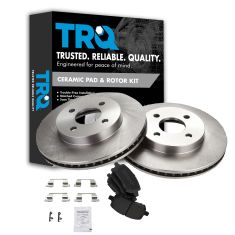1ABFS03735-Chevrolet Pontiac Saturn Front Driver & Passenger Side 2 Piece Brake Rotor Set TRQ BRA76185

Replaces
2006 Chevrolet Cobalt with Rear Disc Brakes Front Driver & Passenger Side 2 Piece Brake Rotor Set TRQ BRA76185

Product Reviews
Loading reviews
5.00/ 5.0
2
2 reviews
Brake rotors
December 17, 2020
I have purchased brake rotors amongst other items from 1aauto with great confidence. The quality is great.
June 14, 2024
Great TRQ product
Customer Q&A
No questions have been asked about this item.
Chevrolet is a registered trademark of General Motors Company. 1A Auto is not affiliated with or sponsored by Chevrolet or General Motors Company.
See all trademarks.














